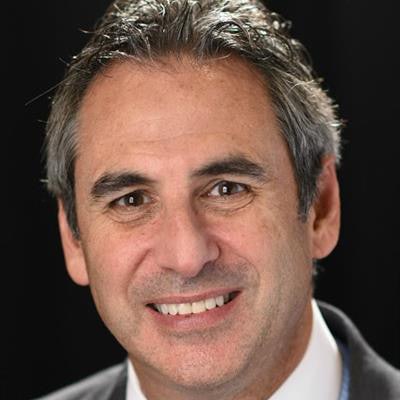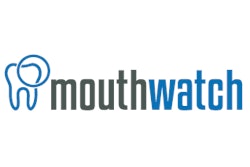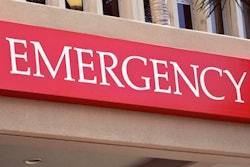
Whether it be in a public health setting or a private practice environment, the main barriers to access to care are time, distance, efficiency, and cost. It is possible to overcome these barriers in an efficient, affordable, and secure manner by using the promising technology of teledentistry.
 Marty Jablow, DMD.
Marty Jablow, DMD.Teledentistry is a growing subset of the much broader digital dentistry category, which most associate with more mature technologies such as CAD/CAM and digital radiography.
While these familiar digital dentistry applications are focused on efficiency and accuracy in providing care and diagnosis, teledentistry is focused on enhancing reach and collaboration between providers, patients, and more.
To achieve this, teledentistry aggregates and integrates several digital dentistry components, including digital imaging, electronic health records, and telecommunications technology, via the internet to link dental clinicians and their patients or dental clinicians with their colleagues.
Main applications
Unlike medicine that has several established telemedicine technology platforms, teledentistry currently has an uncrowded field. Currently, the three main players are Denteractive, OralEye, and MouthWatch.
Denteractive and OralEye use a patient-facing model that connects patients to a provider in their network. MouthWatch is provider-facing and is positioned as a communication and collaboration platform for dental clinicians.
“The largest proving ground for teledentistry technology has been in the public health and mobile dental sectors.”
Currently, the largest proving ground for teledentistry technology has been in the public health and mobile dental sectors to increase access to care for underserved populations. The application of public health dentistry is not generally focused on linking a dentist directly to the patient but rather to link a dentist with a dental hygienist, who in turn has direct contact with the patient. By using teledentistry, the dentist can review hygienist-collected data and authorize preventive care or schedule additional dentist-performed treatment.
This may be a perfect recent example of "necessity being the mother of invention." In this scenario, the hygienist can share information and consult with a dentist if the patient requires diagnosis or treatment outside the hygienist's supervision or scope of practice.
More and more states are embracing the role of technology in the dental supervision of hygiene services, thus leading to the expansion of this application for teledentistry:
- California is leading the way with the adoption of teledentistry and reimbursement in its Denti-Cal program.
- Colorado is incorporating specific teledentistry language in its public health dentistry program.
- Arizona is reimbursing for teledentistry services provided to youth.
The Center for Connected Health Policy offers a state-by-state overview of telehealth and teledentistry policies and programs.
Components
Whether the application is patient- or provider-facing, the teledentistry whole is greater than the sum of its digital dentistry parts. At the hub of a teledentistry application is a scalable and secure software platform that enables both real-time streaming and "store and forward" diagnostic images, videos, and documentation. This enables the practitioners' ability to remotely conduct an evaluation and recommend next steps. Here are a few examples:
The HyLife Oral Health Alliance of Edgerton, WI, is a private endeavor that provides a range of preventive care services, from tooth brushing to hygiene services to residents of senior living and managed care facilities.
Using teledentistry, patients who receive hygiene services can have clinical images documented for patient and caregiver education. Additionally, images, clinical notes, and billing codes are stored in the system.
Exams are assigned to a collaborating dentist who can provide treatment planning for the patient, coordinate an appointment when needed, and triage treatment for more efficient scheduling when restorative or in-office care is required.
Smart Smiles in Salt Lake City provides preventive care services in school settings, such as Head Start programs, school-based health centers, and school screenings. Smart Smiles connects public health hygienists with students who require preventive care, sealants, fluoride, patient education, and more.
These students can then receive dental evaluations and treatment planning from the associated dentist, who can either provide restorative care by visiting the school, traveling with mobile equipment, or scheduling an office appointment. Exam report cards encourage parental scheduling of treatment by revealing visual identification of issues that require attention.
Planet Dental in Laredo, TX, has embraced teledentistry as a platform to connect its team of private-practice dentists and dental hygienists with vulnerable populations of children in a range of school settings. An example is a supercharged screening program that reached new patients while also serving the public and catching underserved children who may fall through the cracks.
For example, exam details from pediatric patients are securely synced to the cloud where a dentist within the group can quickly review all relevant data, ensure the appropriate patient documentation is complete, and produce a treatment plan that is then shared directly with the parent or guardian.
Enhancing a traditional screening program in this manner improves education, increases parent/guardian understanding of the need for treatment, and engages pediatric patients via innovative technology.
Part 2 of this series will explore the benefits of teledentistry for your practice.
Martin Jablow, DMD, practices general dentistry in a group setting in Woodbridge, NJ. He lectures and writes articles on the use of technology to enhance the practice of dentistry and can be reached via email at [email protected].
The comments and observations expressed herein do not necessarily reflect the opinions of DrBicuspid.com, nor should they be construed as an endorsement or admonishment of any particular idea, vendor, or organization.



















